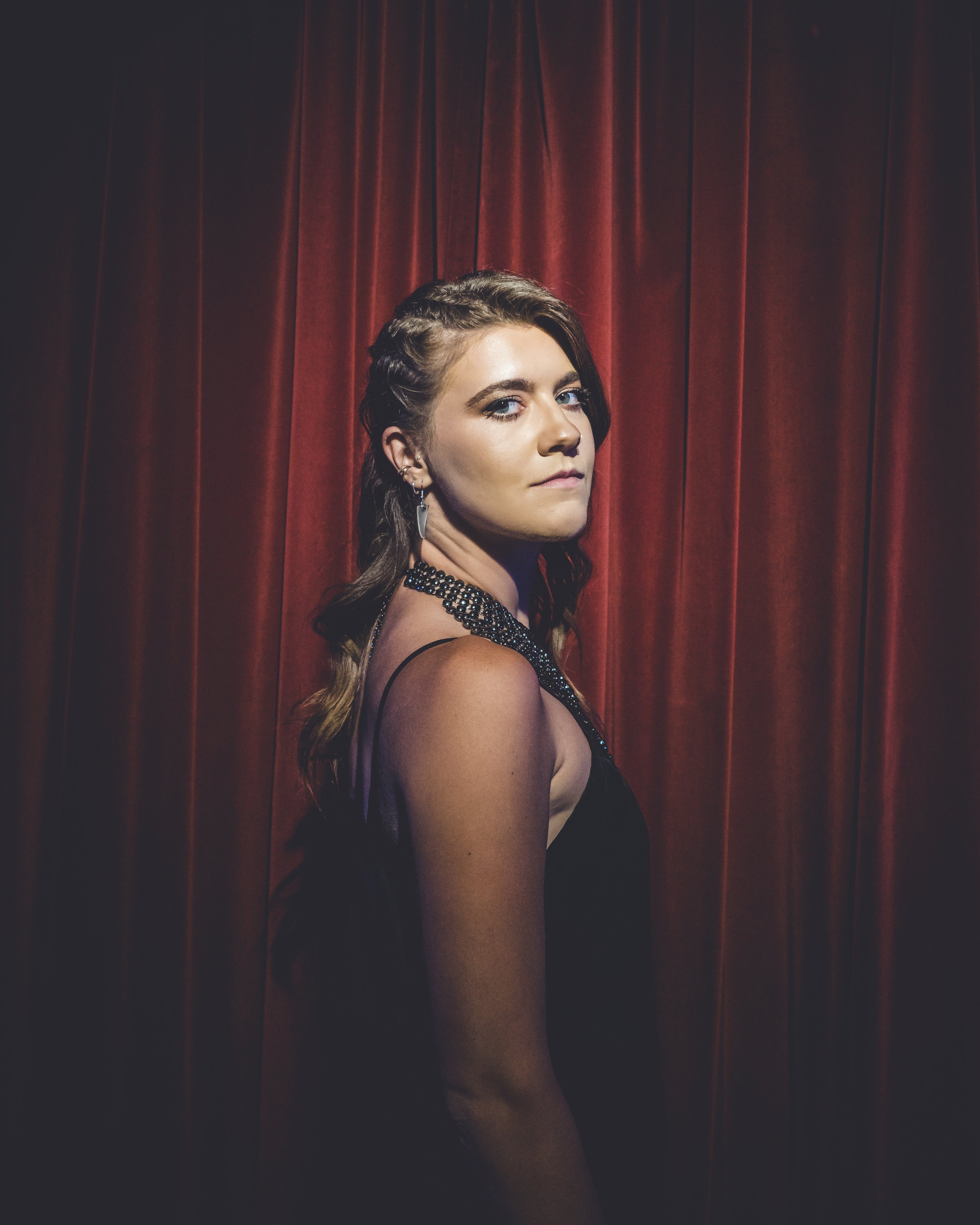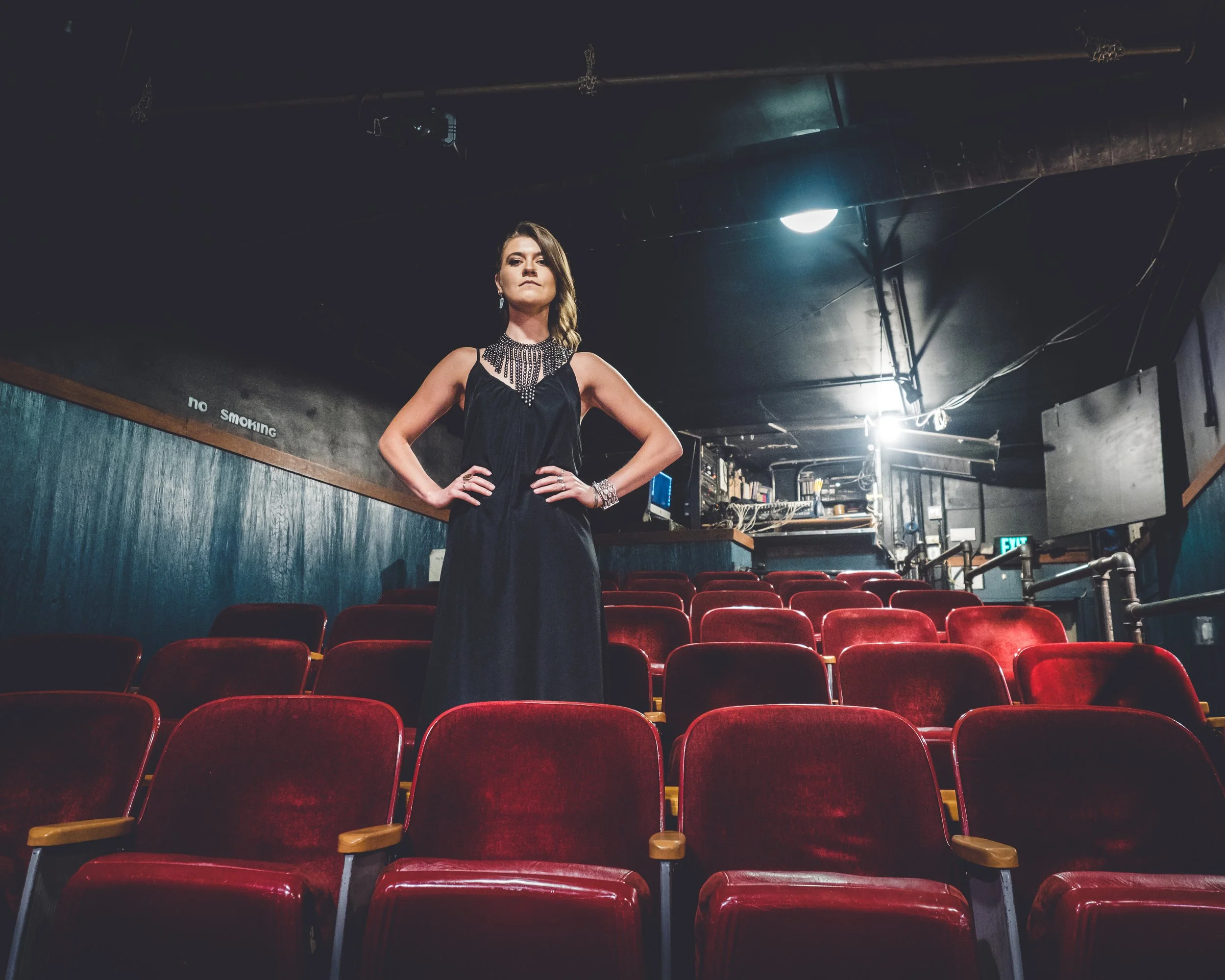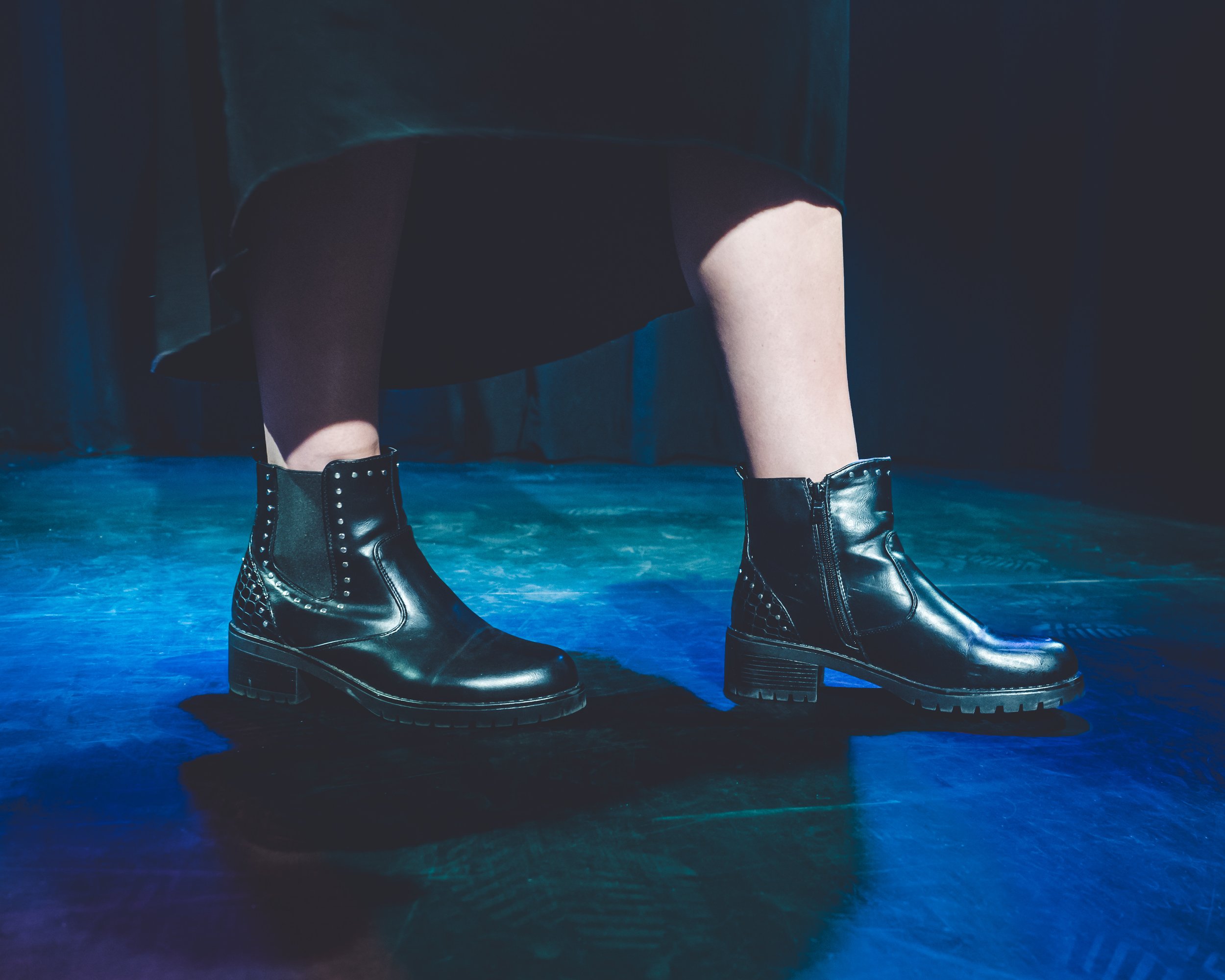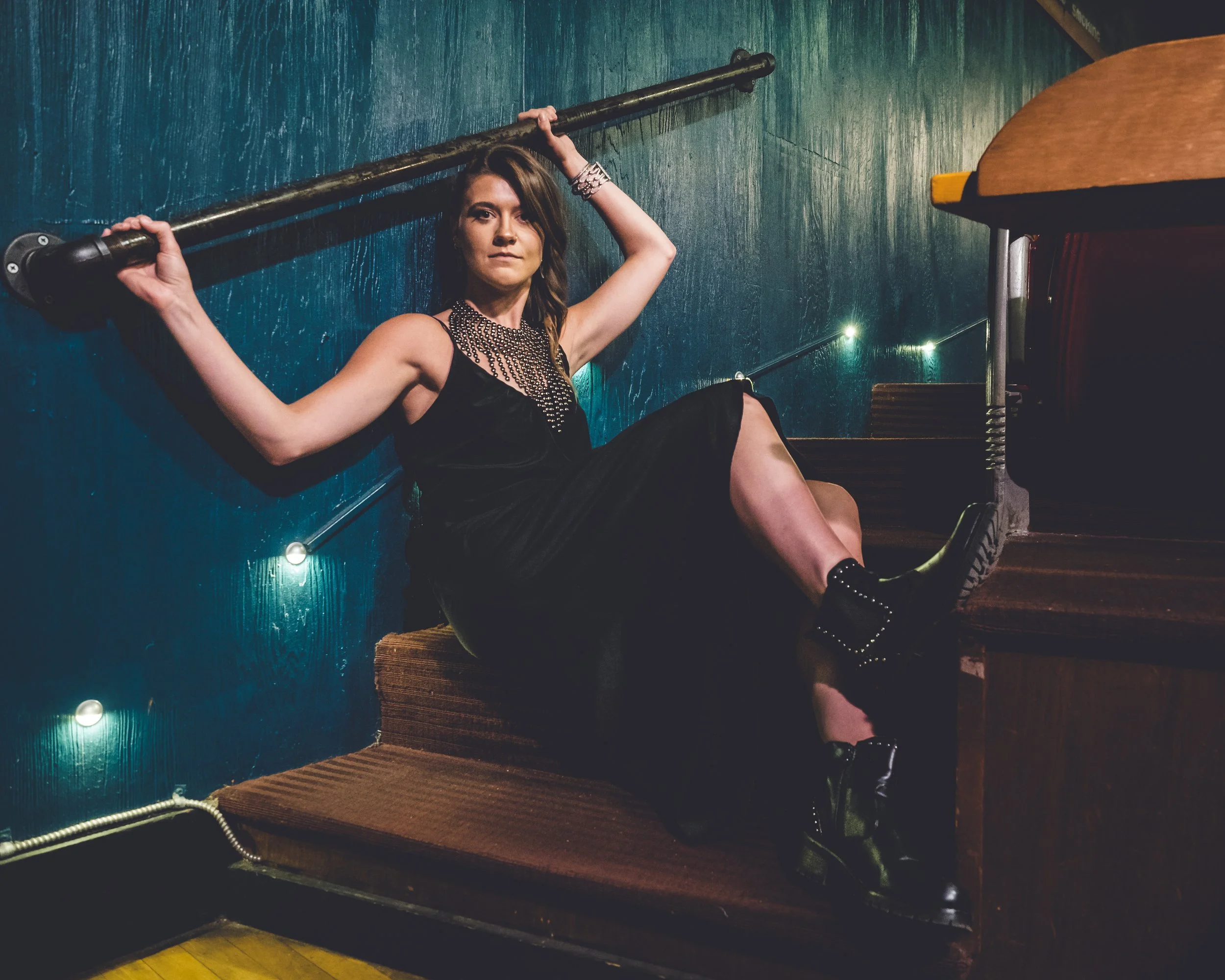Elsa Lee grew up in Duluth, a city steeped in hills with a thick Nordic heritage. Elsa’s family is a mix of a whole bunch of things, but mainly comes from a Swedish and Norwegian decent. She grew up with her parents bringing in their family cultures, sharing to their kids, and harboring the importance of their past. Although she’s never been to Norway, her sister traveled there and shared that in many aspects it felt like Duluth. It was easy to see why their ancestors picked the area due to the rolling hills, close proximity to the water, the haziness, and the damp nature of the region. It felt like home.
When Elsa went to the University of Minnesota to get her bachelors in Political Science, she thought her route would be becoming a high school social studies teacher, working with kids, helping them learn where their strengths are to keep making positive change. She started working in special education and didn’t have energy for music at the end of the day. She had to make a change. All of the songs that she was drawn to were protest songs , or ones that stressed the importance of loving, being good, and kind to each other. There was large gap for that in our society that she recognized needed to be filled.
There was also a powerful lure to use music as an art form to make a statement and reflect. Knowing what she wanted to communicate and write about, which was oftentimes a little controversial, she faced difficulty right away. Her original music was going to piss a lot of people off. There were family and friends who don’t think like her, and knew she was going to be judged by the subject material. She came to a point where delivery of her intended message needed a specific stage persona. That’s when she tapped into her Vikings roots and created ELSKA.
“It’s creating a space for me to do this where it’s not who I show up as every day. I can become this person, say what I need to say, and then slip back into my life and take the braids out.”
-Elsa Lee
Growing up in Duluth, there wasn’t a ton of styles or fashions that pushed the envelop of being edgy. When moving to Minneapolis, she started to question who she really was. What does that look like? What does that feel like? She went through a phase with purple hair. She got her nose pierced. She got bolder. Elsa felt like she could explore a bit more because she wasn’t being evaluated by friends and family that she’d grown up with. This self-discovery developed into an urban edge honoring some of the Nordic woodsy elements with a modern update.
ELSKA is the epitome of that sturdy, reliant, and resilient voice that stands up for values. The fashion is part of that message, part of that confidence. Look at the debut album artwork for the On The Shoulders Of Giants. There’s a literal edge to the design with the thin straight lines. The clear continuity in each Instagram post is important as well. All of the visuals are consistent to strip away any distractions and to keep you focused on the music, the message, and the importance of having a voice. ELSKA has a stylized strength that doesn’t intend to fool you with fancy mirrors, but to direct you with lyrics to make you look in the mirror. She was created to carry the torch forward with strength, love, and courage in what she believed in.
“Trying to put myself out in front of people to say something, while trying to let the perfectionism fall away, is tough. It’s a vulnerable thing to do.”
-Elsa Lee
A first glance at ELSKA and the Nordic twist braiding conveys a stern impression. Her earrings came from Castle Danger Brewery in Two Harbors from a woman that makes jewelry out of sea glass. Worn and smoothed over by the water, the sea glass carries that foggy look of the North Shore. Her smaller earrings were found at our famous Minnesota tradition, the State Fair.
Elsa was shopping with her mother at T.J. Maxx and saw the long warrior inspired necklace, which they both immediately knew was an ELSKA piece. The black low boots with the rivet accents came when she played a gig over in Ireland. Her black dress has been in her collection for long time and keeps a solid, simple style to her stage presence.
Two pieces with heritage are the bracelets she purchased at the Irish Fair in St. Paul. Her hands are filled with rings, symbols, and fidget-ware. Elsa generally isn’t an anxious person, but the fidget ring came from her sister and helps before shows to calm her down. Another ring came from her mother when she visited Hawaii and contains the symbol for love, friendship, and respect. She found another ring from a woman from Poland that sold it at an art fair.
The final two pieces exemplify ELSKA’s persona. One is an Irish Claddagh ring, two hands clasped around a heart topped with a crown. The origin of the symbol dates back to the 1700’s and have strong ties to the small fishing village of Claddagh in County Galway. The story behind the rings most likely came from a native of the village, Richard Joyce, whom was captured by pirates and sold into slavery. Apprenticed to a master goldsmith, Joyce was eventually freed and returned to his village to start his own business.
The final ring on her hand carries the more modern phase, “nevertheless she persisted” an expression adopted by the feminist movement in 2017.
There is power, history, and an edge to every intended piece she wears on stage. It’s part of the message and tuned to correlate with the persona of ELSKA.
Elsa’s closet is a trifecta of perspectives of her personalities. As a runner, she calls a part of her closet the “sporty spice” section. She loved the Spice Girls growing up and comes back to referencing Melanie C with her running wardrobe. The ELSKA alter ego has space, but there’s another softer side of her closet that has more glam, sparkles, and heels. This side fits Elsa’s more bubbly personality and is the typical side most of her friends see.
Her musical influences include Mitski, Phoebe Bridgers, Lucius, and London Grammer. Although each are different, the underlying shared trait is each of them continue to figure out who they are and how they want to present themselves in music and photos. They each give themselves permission to explore their own identity without worrying about what is the right way to do it. She pulls influences from their journeys into her own, allowing her to explore and let the art evolve.
“I have a sport girl, a tough girl, and a glam girl somewhere all inside of me.”
—Elsa Lee
Musically, “Bounty Hunter” is the social justice anthem that tackles the hard feelings from the 2021 Texas Abortion Law that emboldens citizens with a cash bounty if they report someone that has assisted in someone else getting an abortion. This vigilante policy enraged Elsa and didn’t see it as something that was designed to bring people together. She wanted to write a song to share her theory and voice in the matter, to unite people instead. The gloomy piano precedes the full forced beat and eventual buildup of emotions. It’s a beautiful song that doesn’t mix words and intention for the message, an emotional tool to start a conversation on the subject.
“Stand Together” is another example of using her voice for unity. ELSKA’s voice blends with group vocals in the song, sharing the platform. The message of standing together with the same values rings in each chorus. The instrumentation in ELSKA’s music ties into her style and fashion. It’s clear, concise, with each instrument conveying a strong, solid part. There isn’t distractions or any confusion in the goal of the song. The music puts her voice centered, ready to be confident with herself. On The Shoulders Of Giants is filled with powerfully expressive balances of pop, rock, and folk. It’s a tree of thick branches that hold up Elsa’s pure clear songbird voice. It’s an album that meets the cover artwork well, blending softer elements like “Gratitude” to the #metoompls inspired title track.
When ELSKA steps on stage, most of her friends see a dramatic shift from her bubbly self. The clothing she chooses to wear is meant to communicate strength, power, and a leadership characteristic. The warrior that steps on stage is fierce, steely, and stern. The goal is to show up and affect positive change. Her degree in Political Science plays into larger questions of how are we going to move forward.
Elsa references Nina Simone and the artist statement that supports her goal as a songwriter. Nina stated,
“You can't help it. An artist's duty, as far as I'm concerned, is to reflect the times.”
That mantra rings within her, it inspires and separates her from other musicians. The exploration from Vikings, the resilience from her Norwegian heritage, and an Irish Claddagh that symbolizes love, friendship, and loyalty all entail the spirit of ELSKA.
You can see ELSKA on August 29th at 3pm at the Minnesota State Fair. Check out her social media for more details.
Check out the links below for ways to follow ELSKA and all the things we discussed above.
ELSKA website - Instagram - Bounty Hunter - Claddagh Rings - T.J. Maxx - Merch - History of Viking Hair Braiding


















